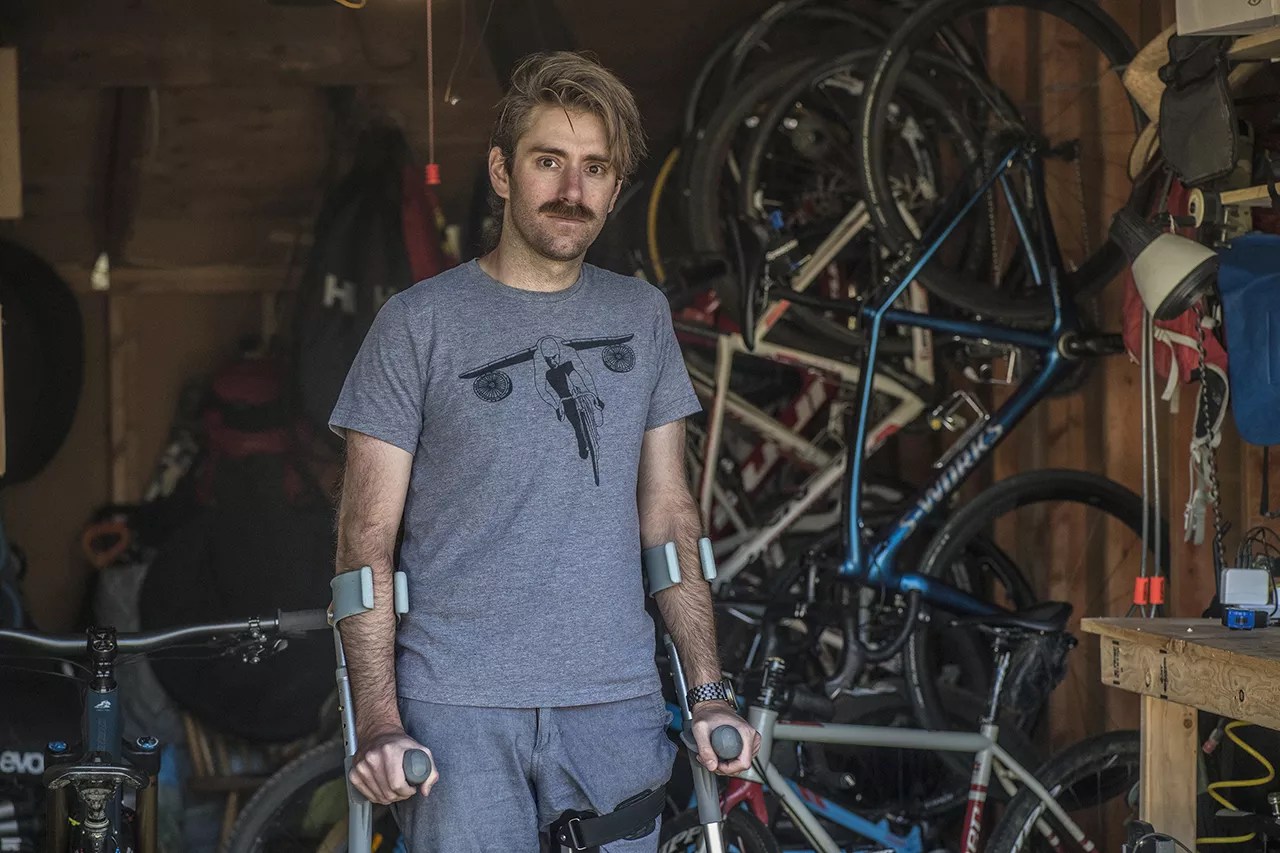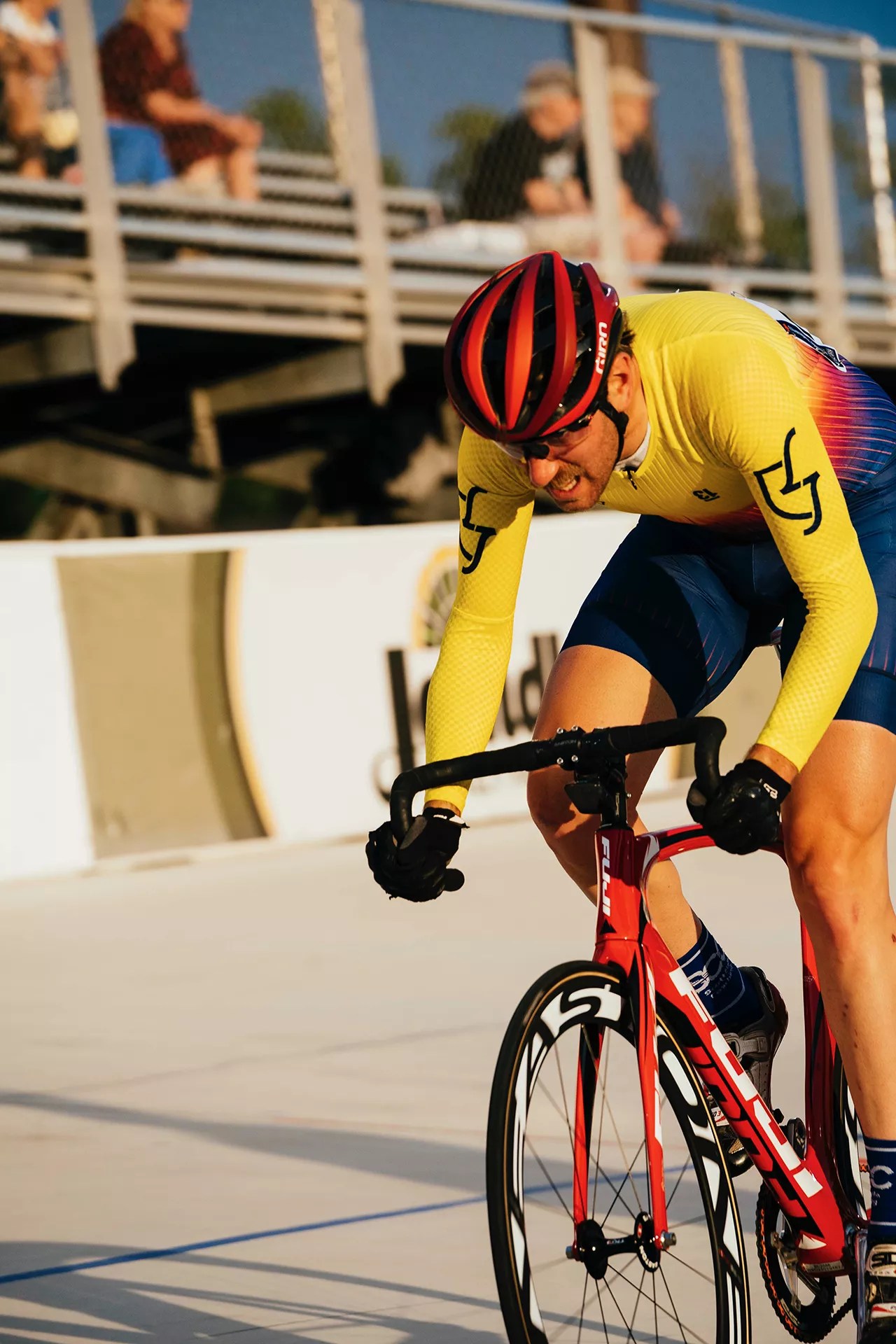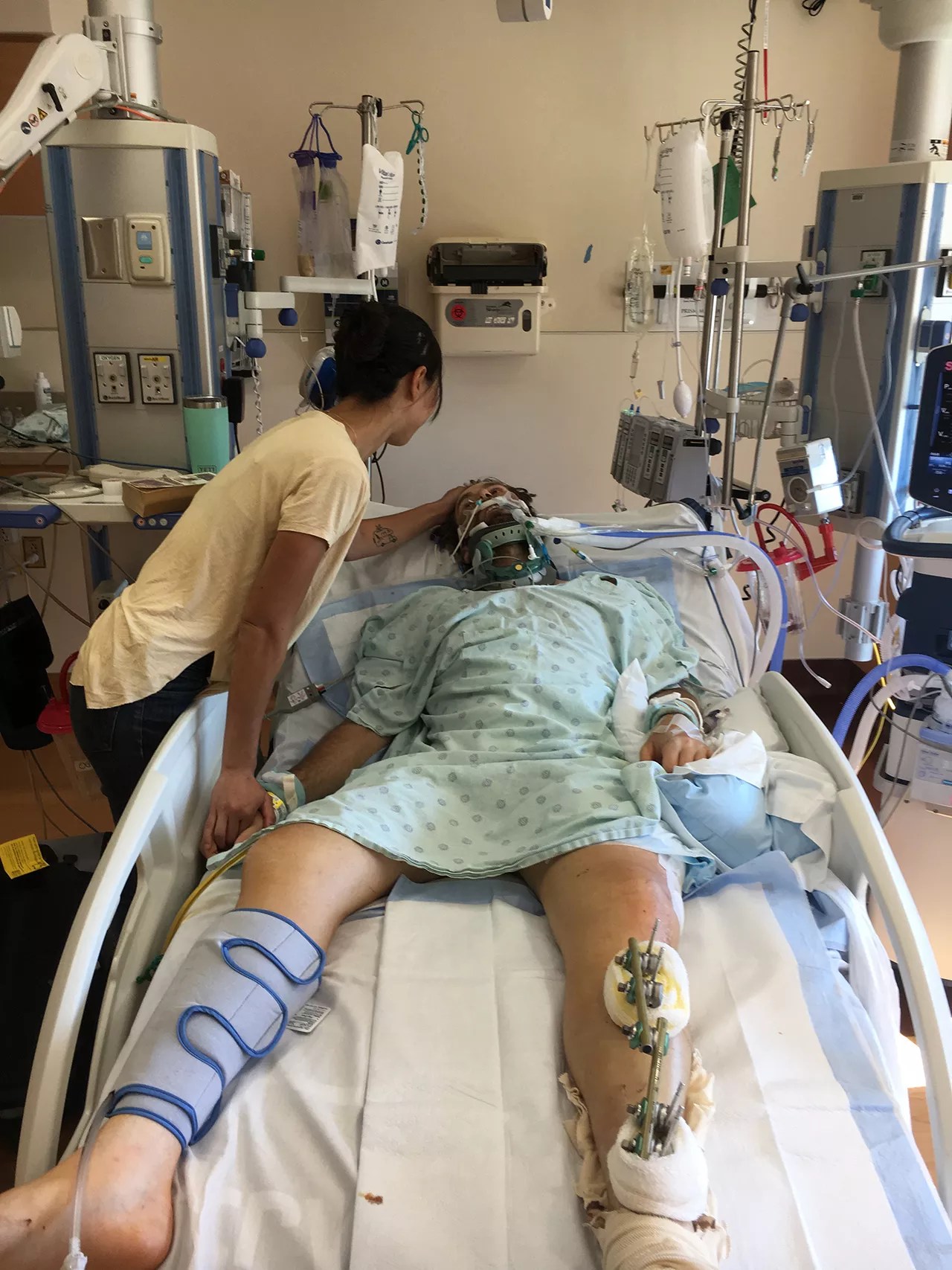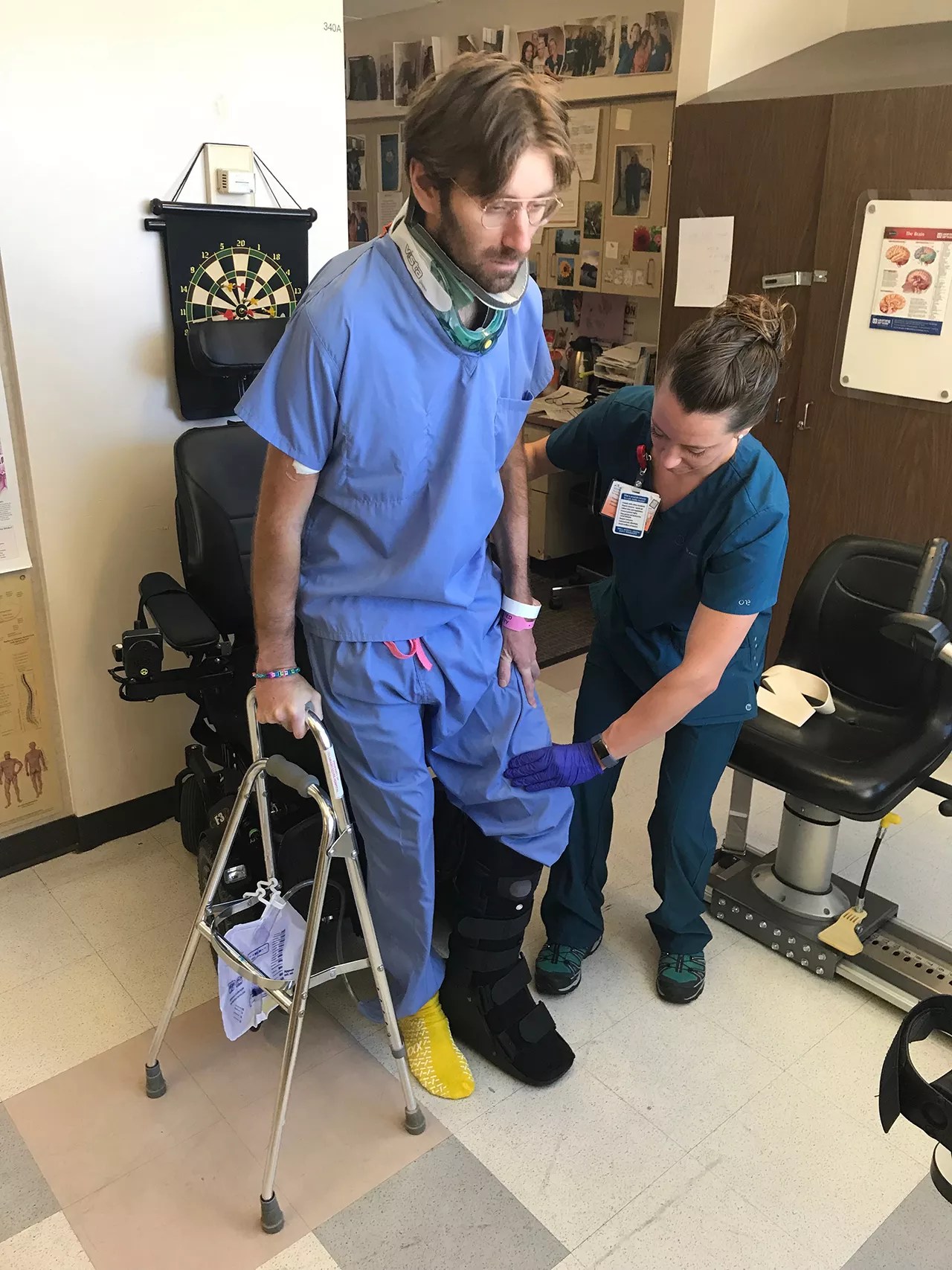
Evan Sem

Audio By Carbonatix
While the stay-at-home order imposed to fight COVID-19 in Colorado has given way to the Safer at Home program, the number of people driving around the state, and especially in the greater Denver area, remains far lower than usual thanks to widespread telecommuting, remote learning at schools of all types, and residents reluctant to go anywhere that large groups have typically gathered.
Meanwhile, bicycles have become more popular than ever. Cycling shops – which were declared “essential” early on – are regularly jammed with dedicated riders and rusty weekend athletes who’ve rediscovered the old two-wheeler moldering in their garage.
That sounds like a setup for the safest biking scenario in years. But Andrew “Bernie” Bernstein, a former editor for Bicycling magazine and a high-level racer who competed across the country, thinks anyone who makes that assumption is being dangerously naive.
“There’s a good chance drivers are out of practice,” Bernstein says. “After a few weeks, they may have forgotten the details of their commute and might be used to not having to actively process things. … I’ve been hearing a lot about people taking advantage of this time of less traffic to get out their muscle cars and drive at excessive rates of speed – and that’s inappropriate, because we need to preserve capacity in our hospitals for COVID-19 patients.”
Denver, make your New Year’s Resolution Count!
We’re $17,500 away from our End-of-Year campaign goal, with just a five days left! We’re ready to deliver — but we need the resources to do it right. If Westword matters to you, please contribute today to help us expand our current events coverage when it’s needed most.
Bernstein knows the impact of poor decisions behind the wheel from excruciating personal experience. Last summer, he was struck by a van while cycling in Boulder County, and if it weren’t for the kindness of a passing stranger, he almost certainly would have lost his life. The van’s driver left the scene of the accident, but has not received any punishment to date.
“Though it has been more than nine months since the hit-and-run, the Colorado State Patrol continues to investigate the incident,” notes Chris Jeffress, Bernstein’s attorney. “It has issued an interim report identifying the owner of the van that struck Andrew Bernstein, but the Colorado State Patrol has not identified the driver. No one has been charged or arrested.”
Trooper Josh Lewis, a Colorado State Patrol spokesperson, confirms, “The case is still currently active and ongoing. We cannot provide anything further at this time, but expect to give an update within about three to four weeks.”

Andrew Bernstein racing at the Valley Preferred Cycling Center in Trexlertown, Pennsylvania, in June 2019.
Trevor Raab
Meanwhile, Bernstein has penned a moving essay for Outside magazine published this month with a pointed headline: “To the Driver Who Hit Me and Ran.” In the piece, he directly addresses the reader.
“I understand that it almost certainly wasn’t you who hit me,” an excerpt reads, “but since what happened to me was caused by an unidentified assailant who was likely driving while either distracted, drunk, high, using a phone, speeding or just angry that there was a cyclist on the road, and as you have probably driven in one or more of those states, this is about you and what you did to me – and what you could do to another cyclist.”
The moment that changed everything for Bernstein took place just after 4:30 p.m. on Saturday, July 20, on Highway 7, better known in the greater Boulder area as Arapahoe Road, at approximately milepost 56, not far from Legion Park. Bernstein had been riding at the Boulder Valley Velodrome in Erie in preparation for what he characterizes as “the season’s last big bike race,” and was pedaling west on the right shoulder when he was hit by a van whose driver just kept going.
On August 2, the CSP revealed that investigators had impounded what they believed was the vehicle in question, and its owner was said to be cooperating.
Even today, the specifics of the crash remain a mystery to Bernstein. “I had left the velodrome and was riding down Arapahoe, and someone who’d been at the velodrome, too, passed me in their car and waved – and that’s the last thing I remember. The next thing I knew, I was coming to in the dirt, in a ditch. I tried to find my phone and wasn’t able to find it, and then I tried to think about how I could raise myself up to wave at a car to help me. But I don’t remember anything after that until I woke up in the hospital almost a week later.”
Once he did, Bernstein learned that he’d been visited by a guardian angel who’d gone through a similar experience; the man originally asked that he be referenced only by his first name, but the Outside essay reveals him to be a local insurance agent named Tim Gillach. The previous May, according to Bernstein, Gillach “was hit by a car when he was riding his bike. It left him with significant injuries that required an extended hospital stay.”
On July 20 of last year, Gillach “was driving his father home from church,” Bernstein says. “He was being observant, and he saw me in the ditch,” then dialed 911.

Andrew Bernstein with fiancee Gloria Liu at the Denver Health Surgical ICU in July 2019.
Eric Bernstein
Gillach stayed with Bernstein until emergency personnel arrived. Had Gillach not spotted him, Bernstein says he believes he “would be dead.”
The crew that rallied around Bernstein during the weeks that followed was led by Gloria Liu, his fiancée (and another ex-editor at Bicycling), and included his younger brother, Eric, who immediately flew to Colorado from Berkeley, California, and stayed for weeks.
“It was disorienting, for sure,” says Eric Bernstein. “We spent a lot of time in hospitals – two or three hospitals, in Gloria’s case.” Bernstein had stays at Boulder Community Health and Denver Health prior to being transferred to Colorado Acute Long Term Hospital in Denver.
“It’s been nightmarish because of the fears and horrors of seeing a loved one so badly injured, and there’s also that otherworldly quality of time so intense it’s like no other that you’ve experienced,” Eric continues. “But it’s also been fun at times, like when he woke up. It might sound odd to say it was a joy to be in the ICU, but when you’re considering the very real possibility of losing a loved one, especially a sibling, and then realizing that you’re not going to suffer that loss because they’re still there with you, it makes it hard to stay sad for too long. And my brother has had the most impressive, indomitable attitude ever since he woke up.”
Bernstein’s refusal to give up came in handy given the scope of the wounds he recapped in his essay. “The blunt impact sent force vectors through my body, snapping my right collarbone and exploding my left shoulder,” he writes. “It broke every single one of my ribs. And my sternum. It collapsed both of my lungs. You shattered my left ankle, broke my tibia and fibula, and snapped my femur. You crushed my pelvis and caused internal bleeding so severe that my blood pressure didn’t stabilize for days, even after emergency surgery and pint after pint of transfused blood. You fractured vertebrae in my neck and back and damaged my spinal cord, paralyzing my left leg and compromising my bladder and bowel function.”
Coming back from such damage was an agonizing process for Bernstein. “I was at Craig Hospital, where they treat patients for spinal cord and traumatic brain injuries,” he says. “I was there for about a month, and they had a pretty extensive focus on regaining functional mobility and also teaching me how to live with a disability – and the beginning of the process of trying to rehabilitate my leg.”
The situation involving his leg “is unusual,” he explains. “A lot of spinal cord injuries are considered complete, where there’s not a chance of recovery. My injury is incomplete, so my left leg has a chance to recover. So they’ve started the process of very slowly teaching me to get the nerve in my leg to fire better, and to get those muscles to get stronger.”
After being discharged from Craig in October, Bernstein continued to receive outpatient physical therapy there until January, when he was transferred to the CU Sports Medicine and Performance Center in Boulder. In addition to helping him boost his leg’s strength, the center’s staff is delivering “a lot of therapies around pain therapy, massage therapy, and also pelvic-floor therapy, which is something that’s more familiar to women than to men.”

Andrew Bernstein during a rehab session.
Courtesy of Andrew Bernstein
In all, Bernstein was treated at four different hospitals over the course of several months (not counting the rehab stints), and during that time, “a lot of medical providers took care of me: nurses and doctors and so many others,” he says. “I am incredibly grateful to all of these people who are now on the front lines of COVID-19. They are the best of us.”
But even though he’s made remarkable progress, Bernstein realizes he has a long way to go. He still must use what he describes as “extensive bracing and crutches” to walk. As for cycling, he knows his racing career is over, and even recreational riding is a goal rather than a reality right now.
Early this year, Bernstein reveals, “I started using a spin bike at the gym, and during quarantine, I was able to ride on a stationary trainer inside. But one of the challenges I have is that the left side of my body has much less muscle mass than the right side. So there’s not good support on the left side of my saddle, and I’m still trying to figure out a fit so I can securely sit on a bike. When I do, I’m hoping to start riding again in a couple of months.”
That should be around the one-year mark since his crash.
Still, Bernstein admits, “I don’t think I’ll make road riding a primary focus. Probably gravel and mountain bikes once I’m able.”
Until then, he hopes his story will serve as a cautionary tale for motorists – particularly individuals who are rusty because they’ve been working from home since the start of the pandemic or folks emboldened by lower highway volume to pretend they’re on the newly revived NASCAR circuit.
“The safety aspect is extremely important to me,” Bernstein emphasizes, “and drivers really need to be careful on the roads.” After all, cyclists are out in force, and because of COVID-19, moments of irresponsibility can have even greater repercussions.
“We absolutely don’t need fucking morons driving at 100 miles per hour who may crash and take up those beds,” he says. “We don’t ever need that, but especially now.”
As Bernstein concludes his essay: “I used to be whole and able-bodied, same as you. When you get behind the wheel, you have incredible power to rob someone of their body. I’m sharing my story to remind you of your responsibility to drive safely, lest you end up maiming someone like me and living with the guilt of causing their lifelong disability or death.”
Update: This story has been corrected to note that at one point in his essay, Andrew Bernstein is directly addressing the reader, not the driver of the van. Our apologies for the error.